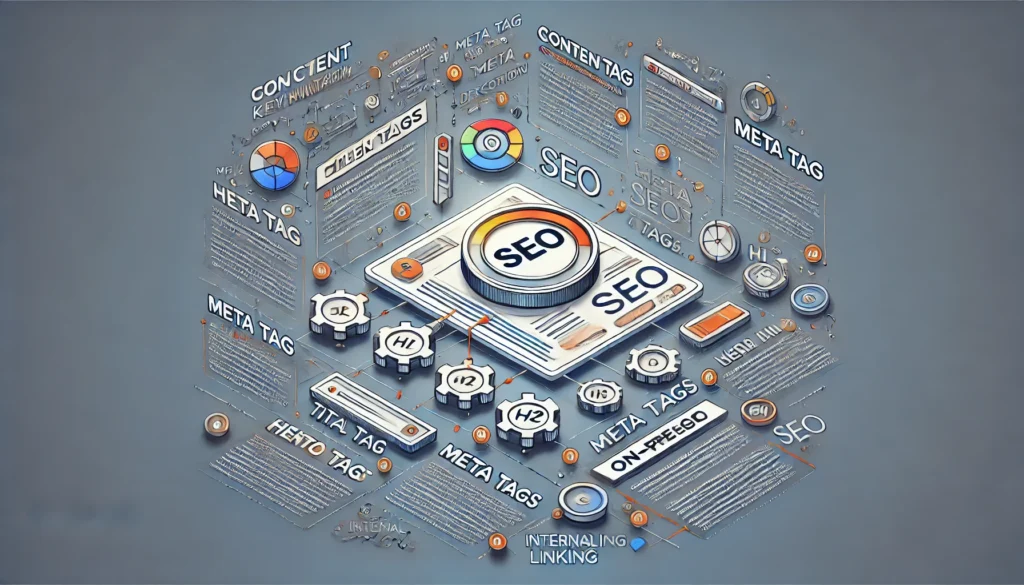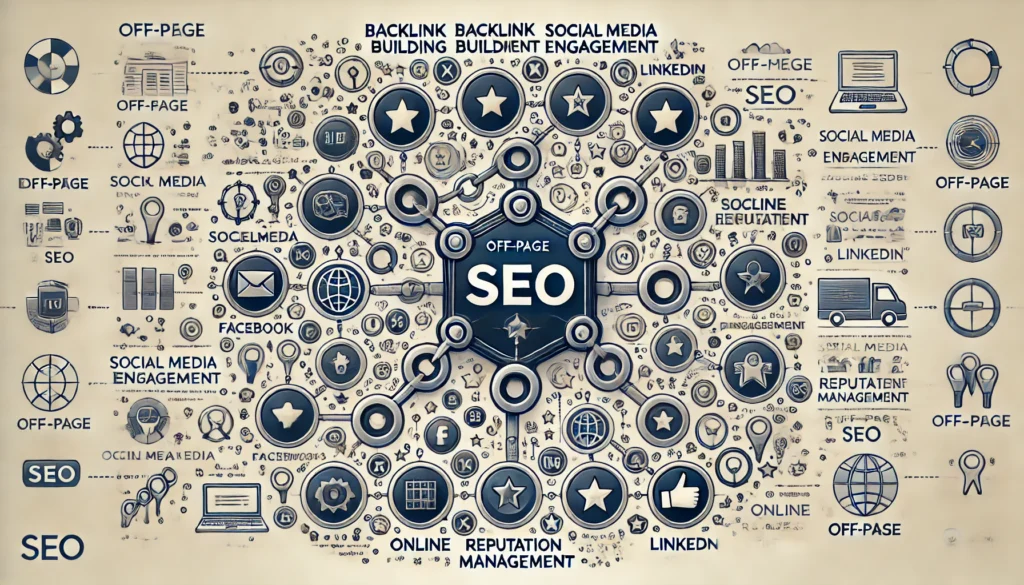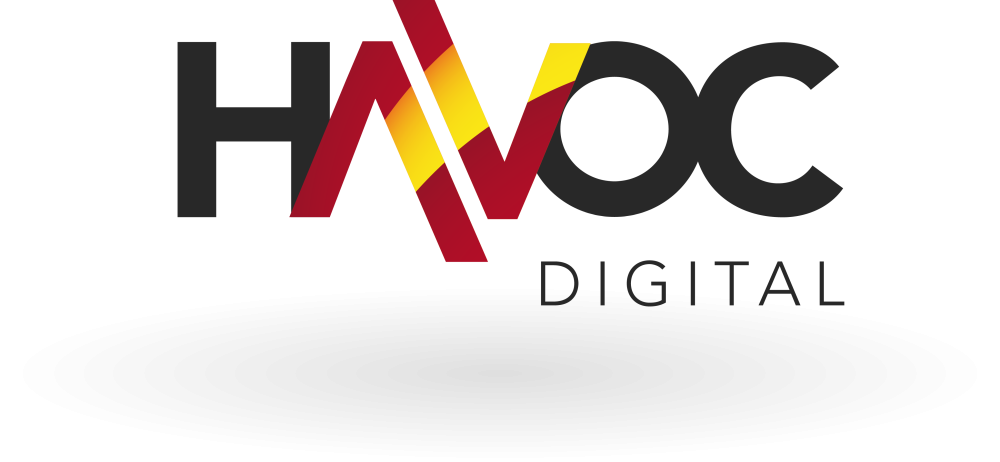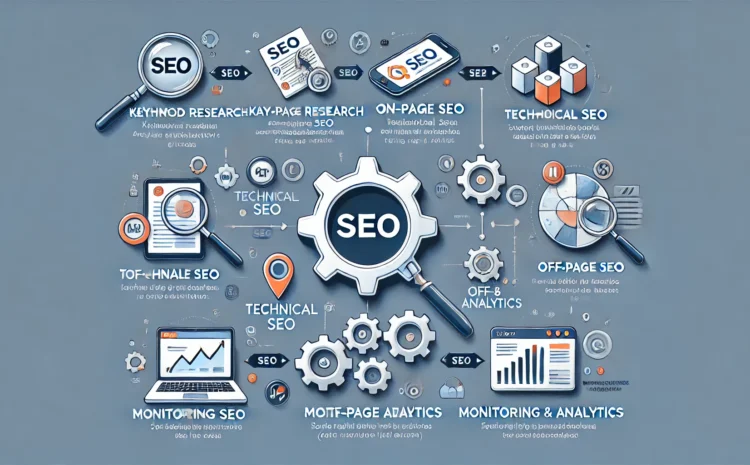What is the Basic Process of SEO?
Intro to the Basic Process of SEO::
Search Engine Optimisation (SEO) is a crucial component of digital marketing, aimed at enhancing a website’s visibility and ranking on search engine results pages (SERPs).
Understanding the basics of SEO can significantly impact the success of an online presence, whether it be for a small business, a personal blog, or a large corporation.
Definition of SEO
SEO, or Search Engine Optimisation, refers to the process of optimising a website to improve its visibility and ranking on search engines such as Google, Bing, and Yahoo.
It involves a variety of techniques and strategies designed to make a website more attractive to search engines, thereby increasing the likelihood of the site appearing at the top of search results for relevant queries.
Importance of SEO in Digital Marketing
The importance of SEO cannot be overstated.
The vast majority of online experiences begin with a search engine, making it essential for businesses to ensure their websites are easily found by potential customers.
Effective SEO helps drive organic traffic to a website, meaning visitors find the site naturally through search results rather than paid advertisements.
This organic traffic is often more valuable, as it tends to include users who are actively searching for the products or services that the site offers.
Additionally, high visibility on search engines enhances brand credibility and trust. Users are more likely to trust and engage with websites that appear at the top of search results. Conversely, sites that rank poorly may be perceived as less authoritative or reliable.
The Goal: Improving Visibility and Ranking in Search Engine Results Pages (SERPs)

The primary goal of SEO is to improve a website’s visibility and ranking on search engine results pages (SERPs). Higher rankings are associated with increased visibility, as users are more likely to click on links that appear near the top of the results.
This increased visibility can lead to higher traffic volumes, more leads, and ultimately, greater revenue.
Achieving high rankings involves a combination of On-page SEO, focuses on optimising elements within the website itself, such as content, meta tags, and URL structure.
Technical SEO addresses the backend aspects, ensuring the site is easily crawlable and indexable by search engines.
Off-page SEO involves activities outside the website, such as building high-quality backlinks and engaging on social media platforms.
The essence of SEO lies in understanding how search engines work and what users are searching for, and then applying this knowledge to create and optimise web content that ranks well in search results.
By improving a website’s visibility and ranking, SEO plays a pivotal role in the overall success of digital marketing efforts.
Keyword Research
Keyword research is a fundamental aspect of SEO that involves identifying and analysing the words and phrases that people use when searching for information, products, or services online.
This process helps in understanding what potential visitors are looking for and enables the creation of content that meets their needs and interests.
Explanation of Keyword Research
Keyword research involves discovering the specific terms and phrases that your target audience uses when conducting searches related to your business or industry.
By understanding these search queries, you can optimise your website’s content to match user intent, making it more likely that your site will appear in relevant search results.
Importance of Keywords in SEO
Keywords are the bridge between what people are searching for and the content you provide to fulfil that search.
They play a crucial role in SEO for several reasons:
1. Visibility and Ranking – Properly chosen keywords help your website rank higher in search engine results pages (SERPs). When your content includes terms that match search queries, it signals to search engines that your page is relevant to those searches.
2. Targeted Traffic – Using relevant keywords ensures that your content attracts visitors who are genuinely interested in your offerings. This increases the likelihood of conversions, as the traffic you receive is more likely to engage with your site and take action.
3. Content Relevance – Keywords help guide the creation of content that answers the questions and meets the needs of your audience. This relevance not only improves user experience but also boosts your SEO efforts, as search engines prioritise high-quality, relevant content.
Tools and Methods for Keyword Research
Several tools and techniques can assist in effective keyword research:
1. Google Keyword Planner (via Google Ads) – This free tool from Google helps you discover new keywords related to your business and see estimates of the search volume and competition for those keywords. It’s an excellent starting point for identifying potential keywords to target.
2. SEMrush – A comprehensive SEO tool that provides detailed insights into keyword rankings, search volume, and competition. It also allows you to analyse competitor keywords, giving you a strategic advantage in your SEO efforts.
3. Ahrefs – Known for its robust backlink analysis capabilities, Ahrefs also offers powerful keyword research tools. It helps you find keyword ideas, track rankings, and analyse the competition.
4. AnswerThePublic – This tool visualises search questions and autocomplete searches in an easy-to-digest format, providing insights into the questions and phrases people use in search engines.
5. Moz Keyword Explorer – This tool provides keyword suggestions, search volume data, and a difficulty score to help you prioritise which keywords to target based on their potential impact.
Identifying Target Keywords: Relevance, Search Volume, and Competition
When conducting keyword research, it’s essential to identify target keywords that balance relevance, search volume, and competition:
1. Relevance – Choose keywords that are highly relevant to your content and business. Irrelevant keywords might bring traffic, but it won’t be the kind that converts. Ensure the keywords align with the topics and themes of your website.
2. Search Volume – This metric indicates how often a particular keyword is searched for. High search volume keywords can bring more traffic, but they often come with higher competition.
Low search volume keywords might attract less traffic but can be valuable if they are highly specific and relevant to your niche.
3. Competition – Assessing the competition for a keyword helps determine how difficult it will be to rank for that term. High competition keywords are often targeted by many websites, making it challenging to achieve a top ranking.
On the other hand, low competition keywords might offer quicker wins, especially for newer or smaller sites.
Keyword research is the cornerstone of effective SEO. By understanding and strategically targeting the right keywords, you can enhance your website’s visibility, attract relevant traffic, and ultimately achieve your digital marketing goals.
On-Page SEO

On-page SEO refers to the practice of optimising individual web pages to improve their search engine rankings and earn more relevant traffic.
This involves both the content and the HTML source code of a page.
Proper on-page SEO ensures that a website is not only accessible to search engines but also user-friendly and relevant to users’ search queries.
Importance of On-Page SEO
On-page SEO is crucial because it helps search engines understand your website and its content, as well as identify whether it is relevant to a searcher’s query.
It also plays a significant role in improving user experience, which can lead to higher engagement and conversion rates.
Content Optimisation
Content optimisation is at the heart of on-page SEO . It involves creating high-quality, relevant content that satisfies user intent and includes strategically placed keywords.
– Quality Content Creation – High-quality content is informative, engaging, and valuable to the reader. It addresses the needs and questions of your audience, providing them with the information they are searching for.
Quality content is also original, well-researched, and free from errors.
– Use of Target Keywords in Content – Keywords should be naturally integrated into the content. This includes using primary and secondary keywords in a way that flows naturally within the text, avoiding keyword stuffing (Black Hat SEO), which can negatively impact readability and SEO performance.
– Incorporating Keywords Naturally – Keywords should be included in a way that feels organic. This means placing them in key areas such as headings, subheadings, and throughout the body text without forcing them in.
The aim is to enhance the content’s relevance to search queries without compromising the quality of the writing.
“Write for your audience, not for SEO”
Ben Miranda
Meta Tags
Meta tags provide information about a webpage to search engines and visitors. They play a crucial role in on-page SEO.
– Title Tags – The title tag is one of the most important on-page SEO elements. It appears in the search engine results and at the top of the browser window.
A compelling, keyword-rich title can significantly impact click-through rates. The title should be concise, accurate, and include the primary keyword close to the beginning.
– Meta Descriptions – The meta description is a brief summary of a page’s content. It appears under the title in search results and can influence whether users click on the link.
A persuasive and informative meta description should include relevant keywords and provide a clear call to action, encouraging users to visit the page.
Header Tags (H1, H2, H3, etc.)
Header tags help structure the content on a webpage, making it easier for both users and search engines to read and understand.
– Structuring Content with Appropriate Header Tags – The H1 tag typically represents the main heading of a page and should include the primary keyword.
Subsequent headers (H2, H3, etc.) should be used to organise content into sections and subsections, making the text more readable and accessible.
Proper use of header tags enhances user experience and helps search engines interpret the content hierarchy.
URL Structure
SEO-friendly URLs are crucial for both search engines and users.
– Creating SEO-Friendly URLs – URLs should be short, descriptive, and include relevant keywords. They should be easy to read and understand, providing a clear indication of the page’s content.
Avoid using complex parameters and unnecessary characters.
Internal Linking
Internal linking is the practice of linking to other pages within the same website. It is essential for on-page SEO for several reasons.
– Importance of Linking Related Content Within Your Website – Internal links help search engines discover and index other pages on your site.
They also help to distribute page authority across your site, boosting the SEO of linked pages.
For users, internal links provide a pathway to explore more content, improving site navigation and increasing engagement.
Strategically placing internal links can guide visitors to important pages and encourage them to spend more time on your site.
On-page SEO is a multifaceted process that involves optimising various elements of a webpage to improve its visibility and relevance in search engine results.
By focusing on content optimisation, meta tags, header tags, URL structure, and internal linking, you can enhance both the user experience and search engine performance of your website.
Technical SEO

Technical SEO refers to the process of optimising a website’s infrastructure to ensure that it meets the technical requirements of search engines.
This optimisation helps search engines crawl, index, and rank a website more effectively. Technical SEO is a foundational aspect of any SEO strategy, as it ensures that the site is both accessible and functional.
Importance of Technical SEO
Technical SEO is crucial because it lays the groundwork for a website’s overall SEO success. Without a solid technical foundation, other SEO efforts such as content creation and link building can be undermined.
Proper technical SEO ensures that search engines can easily access, interpret, and index your website, leading to better visibility and higher rankings.
Website Speed and Performance
Website speed and performance are vital components of technical SEO. They directly impact user experience and search engine rankings.
– Page Load Times and Their Impact on User Experience and Ranking – Slow-loading pages can frustrate users and increase bounce rates. Search engines, particularly Google, consider page speed as a ranking factor.
Faster websites provide a better user experience, which can lead to higher engagement, longer visit durations, and improved conversion rates.
Optimising images, leveraging browser caching, and minimising JavaScript can help improve page load times.
Mobile-Friendliness
With the increasing use of mobile devices for internet browsing, mobile-friendliness has become a critical aspect of technical SEO.
– Ensuring Website is Optimised for Mobile Devices – A mobile-friendly website adapts to different screen sizes and provides a seamless user experience across all devices.
Google uses mobile-first indexing, meaning it predominantly uses the mobile version of a site for indexing and ranking.
Responsive design, fast mobile load times, and easy navigation are essential for mobile optimisation.
XML Sitemaps
XML sitemaps play a key role in helping search engines understand the structure of a website and discover its content.
– Creating and Submitting Sitemaps to Search Engines – An XML sitemap is a file that lists all the important pages on a website, providing search engines with a roadmap to follow.
This ensures that all pages are discovered and indexed, even if they are not easily accessible through internal linking.
Submitting a sitemap to search engines like Google and Bing helps improve the efficiency of the crawling and indexing process.
Robots.txt
The robots.txt file is a crucial tool for managing how search engines crawl a website.
– Guiding Search Engine Crawlers on Which Pages to Index – The robots.txt file informs search engine crawlers which pages or sections of a website should not be crawled or indexed.
This can be useful for preventing the indexing of duplicate content, admin pages, or other non-essential parts of the site.
Proper use of the robots.txt file helps direct search engines to the most important content.
Fixing Crawl Errors
Crawl errors can prevent search engines from accessing and indexing a website’s content, negatively impacting SEO performance.
– Identifying and Resolving Issues Using Tools Like Google Search Console – Crawl errors occur when a search engine attempts to reach a page but fails.
These errors can be identified using tools like Google Search Console, which provides reports on various crawl issues.
Common errors include 404 (not found) errors, server errors, and redirect issues. Resolving these errors ensures that search engines can effectively crawl and index all relevant content on the site.
Technical SEO is an essential component of a comprehensive SEO strategy. By focusing on website speed and performance, mobile-friendliness, XML sitemaps, robots.txt, and fixing crawl errors, you can create a strong technical foundation that supports other SEO efforts and leads to better search engine rankings and user experiences.
Off-Page SEO

Off-page SEO refers to all the activities that you and others do away from your website to raise the ranking of a page with search engines.
This form of SEO focuses on increasing the authority and relevance of your site through content creation, social media engagement, and various other strategies.
The goal of off-page SEO is to create a robust and trustworthy digital presence that search engines recognise and reward with higher rankings.
“Off-Page SEO represents 99% of the month in, month out SEO Work”
Ben Miranda
Explanation of Off-Page SEO
Off-page SEO encompasses all the external factors that influence your site’s ability to rank well in search engine results pages (SERPs).
Unlike on-page SEO , which deals with the elements on your website, off-page SEO involves actions taken outside your own site to impact your rankings within SERPs.
This includes link building, social media marketing, and online reputation management, all of which contribute to how search engines perceive the authority, relevance, and trustworthiness of your website.
Backlink Building
Backlink building is a cornerstone of off-page SEO. It involves acquiring links from other websites to your own, which search engines use as a signal of the quality and relevance of your content.
– Importance of High-Quality Backlinks – High-quality backlinks act as votes of confidence from other websites. They signal to search engines that your site is a credible and authoritative source of information.
Not all backlinks are created equal; links from reputable, high-authority sites are more valuable than those from low-quality or spammy sites.
High-quality backlinks can significantly boost your site’s visibility and ranking in SERPs.
[More Info]
Strategies for Earning Backlinks
– Guest Posting – Writing articles for other reputable websites in your industry allows you to include a link back to your site. This not only builds backlinks but also positions you as an authority in your field.
– Partnerships – Collaborating with other businesses or influencers can help you earn backlinks. This could include co-created content, joint webinars, or mutually beneficial promotions.
– Content Marketing – Creating valuable, shareable content such as blog posts, infographics, and videos can naturally attract backlinks.
When your content is useful and engaging, other sites are more likely to link to it.
Social Media Engagement
Social media engagement plays a significant role in off-page SEO by driving traffic to your site and enhancing brand awareness.
– Role of Social Media in Driving Traffic and Building Brand Awareness – Social media platforms are powerful tools for promoting your content and engaging with your audience.
By sharing your content on social media, you can increase its visibility and drive more traffic to your website.
Social media engagement also helps build brand awareness and credibility.
Active and consistent presence on platforms like Facebook, Twitter, LinkedIn, and Instagram can lead to more shares, likes, and comments, which in turn can boost your site’s authority and visibility in search engines.
Online Reputation Management
Online reputation management involves monitoring and influencing how your business is perceived online. This is crucial for maintaining a positive image and ensuring long-term success.
– Managing and Improving Your Online Reputation Through Reviews and Feedback
– Reviews – Positive reviews on platforms like Google My Business (Local SEO) , Yelp, and industry-specific review sites can enhance your online reputation and attract more customers.
Encourage satisfied customers to leave reviews and promptly address any negative feedback to show that you value customer satisfaction.
– Feedback – Regularly monitoring and responding to feedback on social media, forums, and other online platforms can help you manage your reputation.
Engaging with your audience shows that you care about their opinions and are committed to improving your services or products.
Off-page SEO is an essential aspect of a comprehensive SEO strategy. By focusing on backlink building, social media engagement, and online reputation management, you can enhance your site’s authority, drive more traffic, and ultimately achieve higher rankings in search engine results pages.
Monitoring and Analytics

Monitoring and analytics are crucial components of an effective SEO strategy. They involve tracking, analysing, and interpreting various data points to understand how well your SEO efforts are performing.
By regularly monitoring key metrics and conducting in-depth analysis, you can make informed decisions to refine and improve your SEO strategy, ensuring sustained success and growth.
Importance of Monitoring and Analytics
The importance of monitoring and analytics in SEO cannot be overstated. They provide the insights needed to understand how your website is performing, identify areas for improvement, and measure the effectiveness of your SEO efforts.
Without monitoring and analytics, you would be operating blindly, making it difficult to know what’s working and what’s not.
Tools for Tracking SEO Performance
Several tools are available to help track and analyse SEO performance. These tools provide valuable data and insights that are essential for making informed decisions.
– Google Analytics – is a powerful, free tool that provides comprehensive data on website traffic and user behaviour. It allows you to track how visitors find and interact with your site, helping you understand which SEO strategies are driving traffic and engagement.
– SEMrush – is a versatile SEO tool that offers detailed insights into keyword rankings, backlinks, and overall site performance. It also provides competitor analysis, helping you understand how your site compares to others in your industry.
– Ahrefs – is another robust tool that focuses on backlink analysis, keyword research, and competitive analysis. It helps you identify opportunities for improving your SEO strategy and track your site’s performance over time.
Key Metrics to Monitor
Monitoring the right metrics is essential for evaluating the success of your SEO efforts. Here are some key metrics to focus on:
– Organic Traffic – Organic traffic refers to the visitors who arrive at your site through unpaid search results. Monitoring organic traffic helps you understand how well your SEO strategies are attracting relevant visitors to your site.
– Keyword Rankings – Tracking keyword rankings shows how well your site is performing for specific search terms. It helps you identify which keywords are driving traffic and where there is room for improvement.
– Bounce Rate – The bounce rate indicates the percentage of visitors who leave your site after viewing only one page. A high bounce rate can suggest that your site’s content or user experience needs improvement. Reducing bounce rate can lead to higher engagement and better SEO performance.
– Conversion Rate – The conversion rate measures the percentage of visitors who take a desired action on your site, such as making a purchase or filling out a form. Tracking conversion rates helps you evaluate the effectiveness of your SEO efforts in driving valuable actions and achieving business goals.
Regular Reporting and Analysis
Regular reporting and analysis are critical for maintaining and improving your SEO strategy. By consistently reviewing performance data, you can make data-driven decisions to enhance your site’s visibility and effectiveness.
– Making Data-Driven Decisions to Refine and Improve SEO Strategy – Regularly analysing your SEO performance data allows you to identify trends, strengths, and weaknesses.
Based on this analysis, you can make informed adjustments to your strategy. For example, if a particular keyword is performing well, you might focus more efforts on related keywords.
Conversely, if a page has a high bounce rate, you might need to improve its content or user experience.
Monitoring and analytics are indispensable for any successful SEO strategy. By utilising tools like Google Analytics, SEMrush, and Ahrefs, and focusing on key metrics such as organic traffic, keyword rankings, bounce rate, and conversion rate, you can gain valuable insights into your site’s performance.
Regular reporting and analysis enable you to make data-driven decisions, ensuring that your SEO efforts are continuously refined and improved for optimal results.
In Summary…
SEO is a multifaceted process that involves several key steps to improve a website’s visibility and ranking on search engines. Understanding and implementing these steps is crucial for any business or individual looking to enhance their online presence.
Recap of the Basic Process of SEO
SEO can be broadly divided into several essential components, each playing a significant role in achieving optimal search engine performance.
– Keyword Research – Identifying the right keywords is the foundation of effective SEO. This involves understanding what your target audience is searching for and integrating those keywords naturally into your content.
– On-Page SEO – This includes optimising individual web pages to make them more search engine-friendly. Key aspects include content optimisation, meta tags, header tags, URL structure, and internal linking.
– Technical SEO – Ensuring that your website meets the technical requirements of search engines. This includes improving site speed, ensuring mobile-friendliness, creating XML sitemaps, properly configuring robots.txt files, and fixing crawl errors.
– Off-Page SEO – Building the website’s authority and credibility through activities outside the website. This involves backlink building, social media engagement, and online reputation management.
– Monitoring and Analytics – Continuously tracking and analysing the performance of your SEO efforts. Using tools like Google Analytics, SEMrush, and Ahrefs to monitor key metrics such as organic traffic, keyword rankings, bounce rate, and conversion rate.
Regularly reporting and making data-driven decisions to refine and improve your SEO strategy.
Emphasis on Continuous Optimisation and Staying Updated with Search Engine Algorithms
SEO is not a one-time task but an ongoing process.
Search engine algorithms are constantly evolving, and what works today might not be effective tomorrow.
Continuous optimisation is essential to maintain and improve your search engine rankings. This means regularly updating your content, improving user experience, and staying informed about the latest SEO trends and algorithm changes.
By doing so, you can ensure that your website remains competitive and continues to attract organic traffic.
Encouragement to Seek Professional SEO Help for Complex Issues
While basic SEO practices can be implemented by most website owners, certain aspects of SEO can be highly complex and technical.
For more intricate issues, such as resolving technical errors, implementing advanced strategies, or conducting in-depth analysis, seeking professional SEO help can be invaluable.
Professional SEO experts have the knowledge, experience, and tools to tackle complex SEO challenges effectively.
They can provide tailored strategies and solutions to help your website achieve its full potential.
In summary, mastering the basics of SEO involves a thorough understanding of keyword research, on-page SEO, technical SEO, off-page SEO, and monitoring and analytics. Continuous optimisation and staying updated with search engine algorithms are crucial for sustained success.
For complex issues, seeking professional SEO assistance can provide the expertise needed to navigate the ever-changing landscape of search engine optimisation effectively – Ben Miranda

Citations and References
All images where created by AI as representations of the subject matter, some creative license and spelling accuracy were used.
1. Google Search Central – SEO Starter Guide:
– URL: https://developers.google.com/search/docs/beginner/seo-starter-guide
– Description: Google’s official guide on the basics of SEO, including keyword research, on-page SEO, and technical SEO.
2. Moz – The Beginner’s Guide to SEO:
– URL: https://moz.com/beginners-guide-to-seo
– Description: Comprehensive guide covering all aspects of SEO, from keyword research to technical SEO.
3. Ahrefs – SEO Basics:
– URL: https://ahrefs.com/blog/seo-basics/
– Description: Detailed overview of fundamental SEO practices, including keyword research, on-page optimisation, and link building.
4. SEMrush – SEO Fundamentals:
– URL: https://www.semrush.com/academy/courses/seo-fundamentals
– Description: Online course covering the essentials of SEO, suitable for beginners and experienced marketers.
5. Google Analytics Help Center:
– URL: https://support.google.com/analytics/
– Description: Resource for understanding how to use Google Analytics to track and analyse website performance.
6. Search Engine Journal – The Complete Guide to On-Page SEO:
– URL: https://www.searchenginejournal.com/on-page-seo-guide/
– Description: In-depth guide on optimising individual web pages for better search engine rankings.
7. Yoast – The Ultimate Guide to Technical SEO:
– URL: https://yoast.com/technical-seo/
– Description: Comprehensive guide to technical SEO, including site speed, mobile-friendliness, and XML sitemaps.
8. Backlinko – The Definitive Guide to SEO in 2024:
– URL: https://backlinko.com/seo-guide
– Description: Extensive guide to current SEO best practices, including advanced techniques and strategies.
9. Neil Patel – The Complete Guide to SEO:
– URL: https://neilpatel.com/what-is-seo/
– Description: Beginner-friendly guide to understanding and implementing SEO, covering all major aspects of the process.
10. HubSpot – How to Perform Keyword Research for SEO:
– URL: https://blog.hubspot.com/marketing/how-to-do-keyword-research-ht
– Description: Detailed article on conducting keyword research effectively, including tools and techniques.





